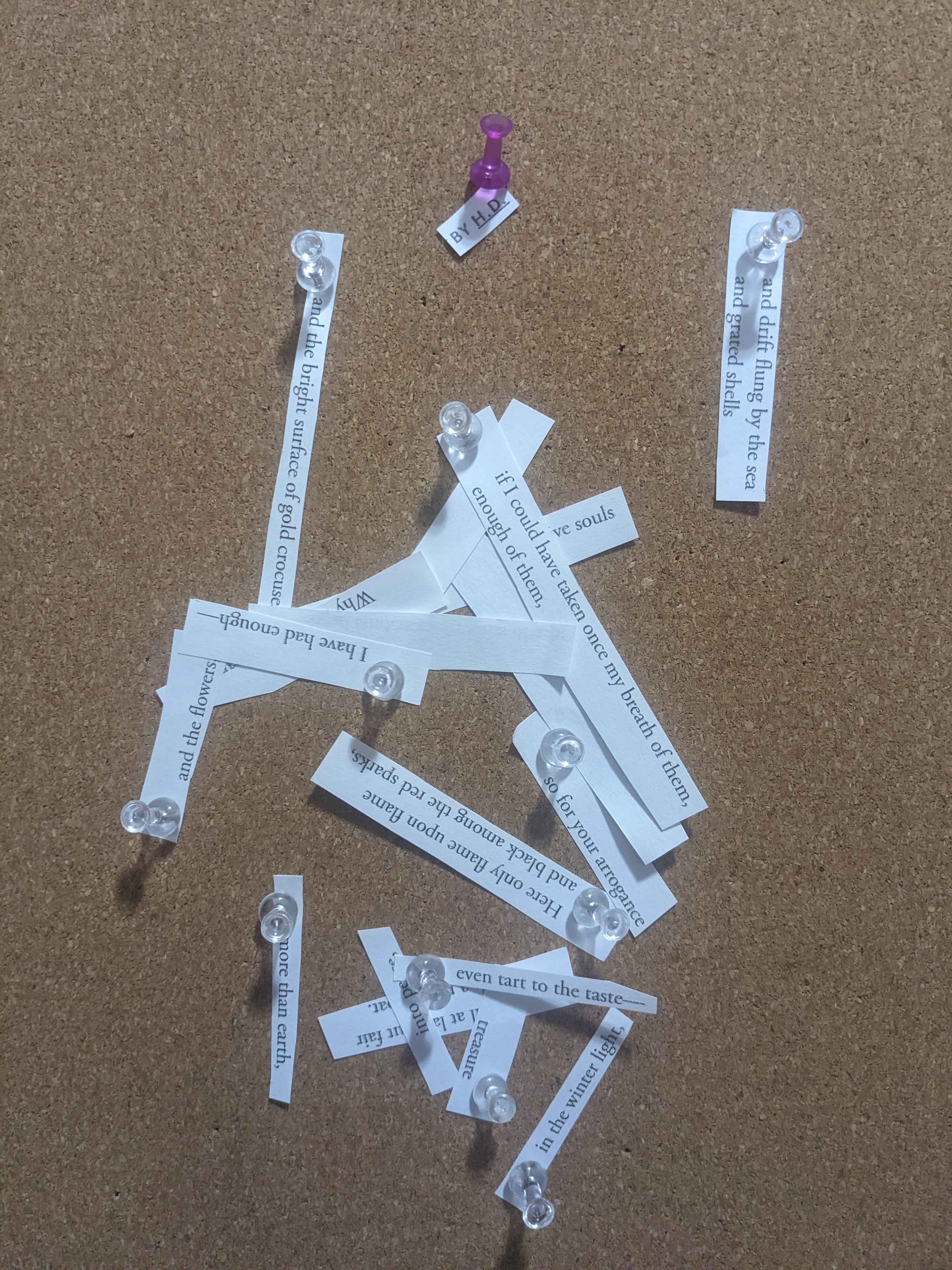
Above is "H.D. and Chance #1" with transcribed poem below
Inspired by the work of chance artists from the dada movement such as Jean Arp, I wanted to create some pieces which combined both H.D.'s image-driven poetry and the dada concept of chance. As H.D. was Ezra Pound’s main model of imagist poetry, the idea behind my use of H.D.’s poems in a dada-chance-style would be that no matter what lines of H.D.’s poetry fell where, the strength of her imagistic writing would still be apparent. I cut/tore up four of my favorite poems by H.D.: “Sheltered Garden (1916),” “Sea Poppies (1916),” “Evening (1916),” and “Eurydice (1917).” All four of these poems were written around the same time that Dada was taking off in Zurich, with its roots at the Cabaret Voltaire. Though she was alive at the time, H.D. wasn’t a part of the Dada movement, and therefore this combination of H.D. and dada is one that exists only in imagination, not in the reality of the early 20th century.
Born in Bethlehem, Pennsylvania, Hilda Doolittle, known as H.D., was a prolific poet, essaysist, and novelist who lived as an expatriate for most of her life. Throughout her life, she had close relationships with other modernist writers, such as Ezra Pound, Bryher, Richard Adlington, D.H. Lawrence, and William Carlos Williams, and met others as well, such as W.B. Yeats and T.S. Eliot. H.D. was also passionate about Greek translation and Greek mythology, much of the latter pervades her writing, and she was also fascinated by psychoanalysis. Later in her life she was even psychoanalyzed by Freud himself, but she was perturbed by the fact that he “preferred dogs to cats.”
Williams himself described H.D. as having a “provocative indifference to rule and order,” and also relayed her own admission of how she would sometimes splash ink on her clothes prior to writing a poem so that she could embrace feelings of “freedom and indifference,” concepts which were strongly employed by the dada movement, and which made me want to connect H.D. to dada, despite her never having been involved with it during her time.
H.D. was Ezra Pound’s leading model of “imagism” which was a brief movement that spanned the four year period from 1913-1917. Some have even speculated the Pound created imagism as a way to promote H.D.’s poetry, though there were other imagist poets as well, such as Richard Adlington (to whom H.D. was married) James Joyce, and F.S. Flint. Though Pound coined imagism, it’s initial ideas were inspired by the philosophizing of T.E. Hulme, who said “visual concrete one….Images in verse are not mere decoration, but the very essence.” — T.E. Hulme (English philosopher and poet).
The first rule of imagism, as decided by Pound, was “Direct treatment of the “thing,” whether subjective or objective,” which is certainly what H.D. models in much of her short form poetry. Imagism as a movement was a response against victorian and romantic sentimentalism.
I was really fascinated by the dada concept of “chance” art employed by some dada artists, such as Jean Arp and Man Ray. By using chance, improvisation, and accident, dada artists sought to subvert the logical intentionality that was so prominent in definitions of art up to that point.
One example of Dada chance art comes from Jean Arp (Hans Peter Wilhelm Arp 1887-1966) who was a poet, painter, and sculptor born in Strassburg, Germany (which is now Strasbourg, France). Arp was an avant garde artist and like many artists during WWI, he found refuge in Zurich, Switzerland. There, Arp became one of the founding members of Dada in 1916.
Some of Arp’s “chance” driven art pieces include: “According to the Laws of Chance (1933)” which was created by dropping at random pieces of painted paper and pasting them where they fell, and “Torn-Up Woodcut (1920-54),” which was made in a similar fashion, though this time using torn up pieces of dada print from 1920.
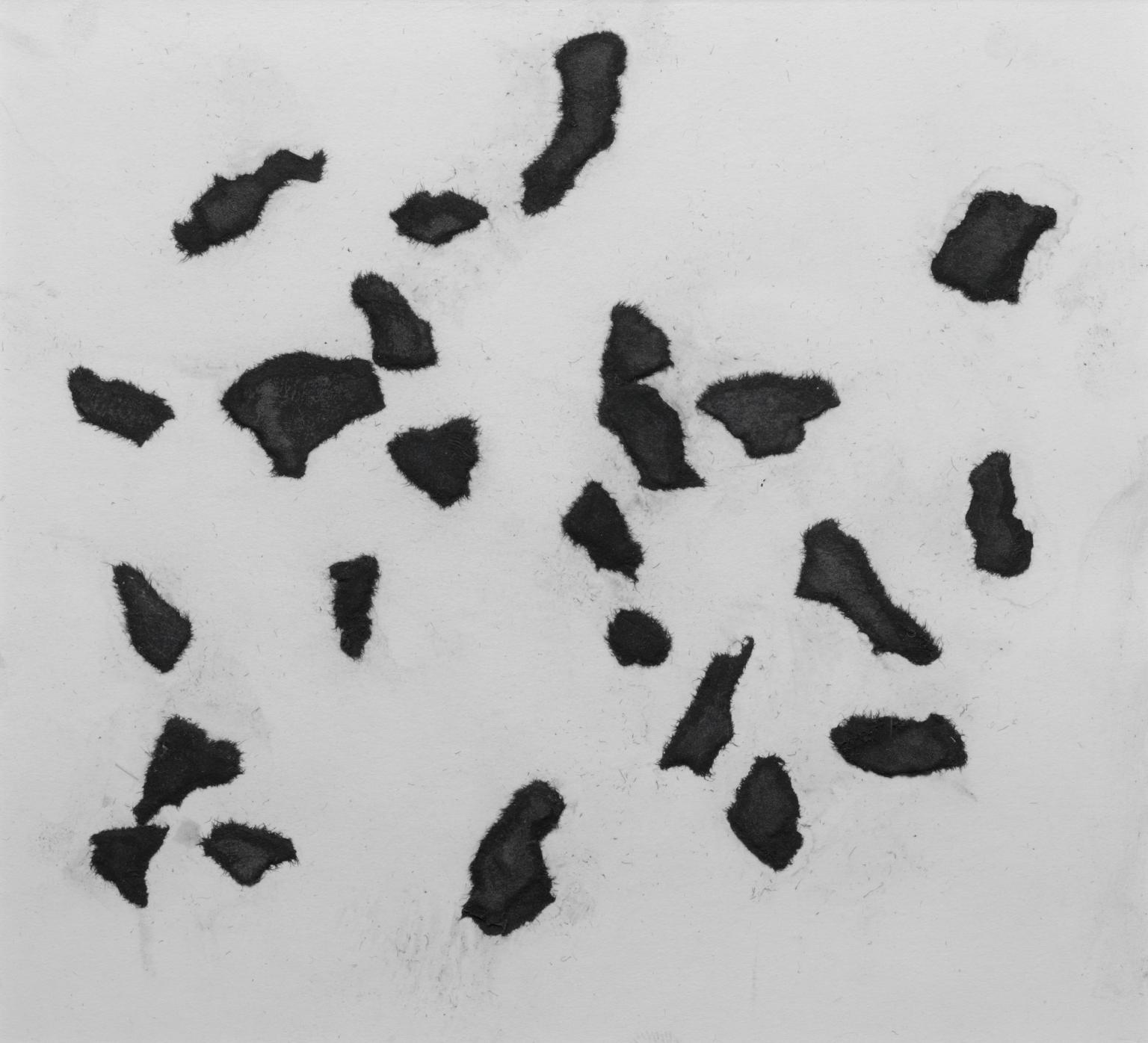
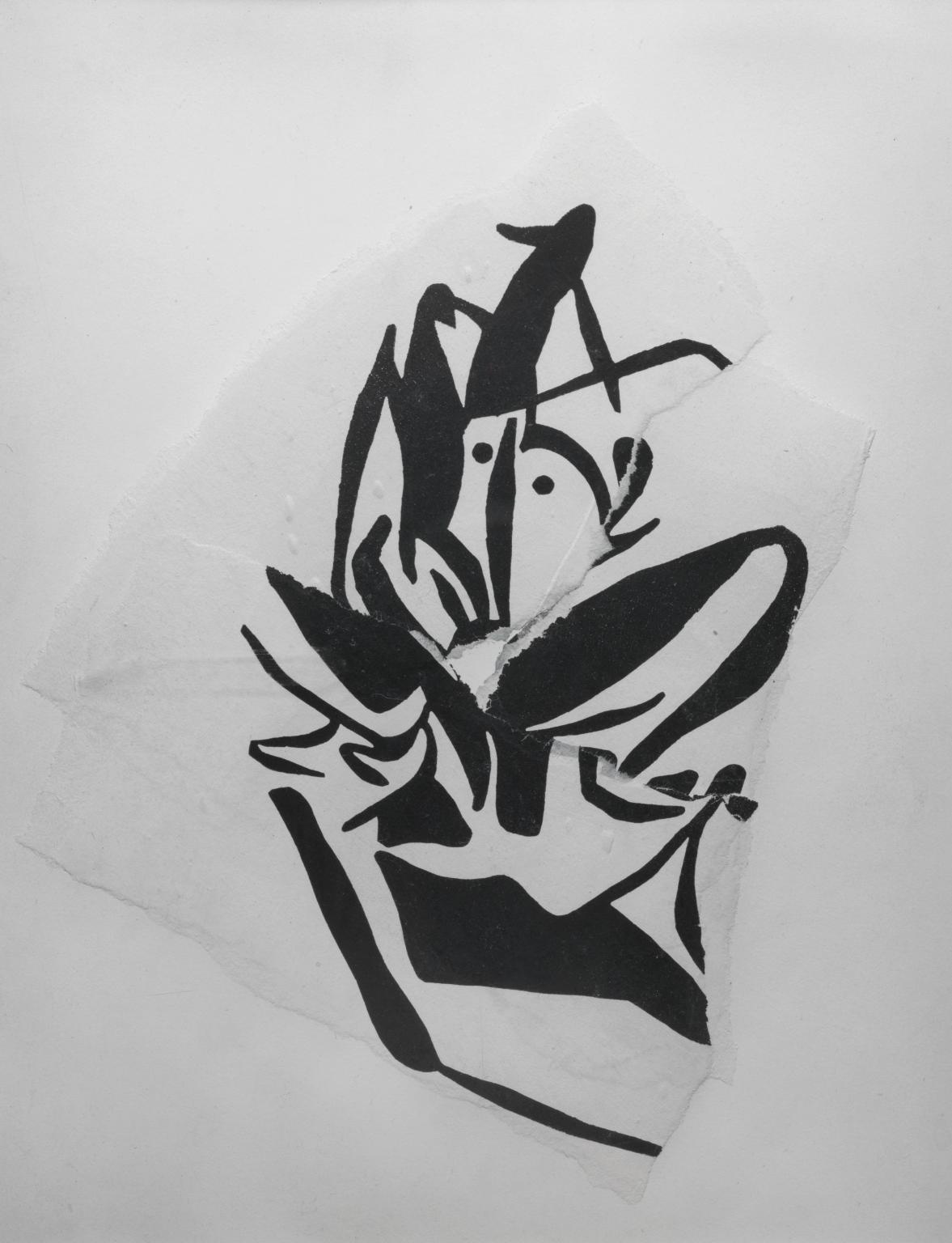
Below are the chance pieces which were created by cutting up poems by H.D. and dropping and pinning them where they fell as an echo of the dada "chance" method.

Above is "H.D. and Chance #1" with transcribed poem below
and drift flung by the sea
and grated shells
and the bright surface of gold crocuses
If I could have taken once my breath of them,
enough of them,
souls
I have had enough —-
and the flowers
so for your arrogance
here only flame upon flame,
and black among the red sparks,
more than earth
even tart to the taste —
into
treasure
in the winter light,
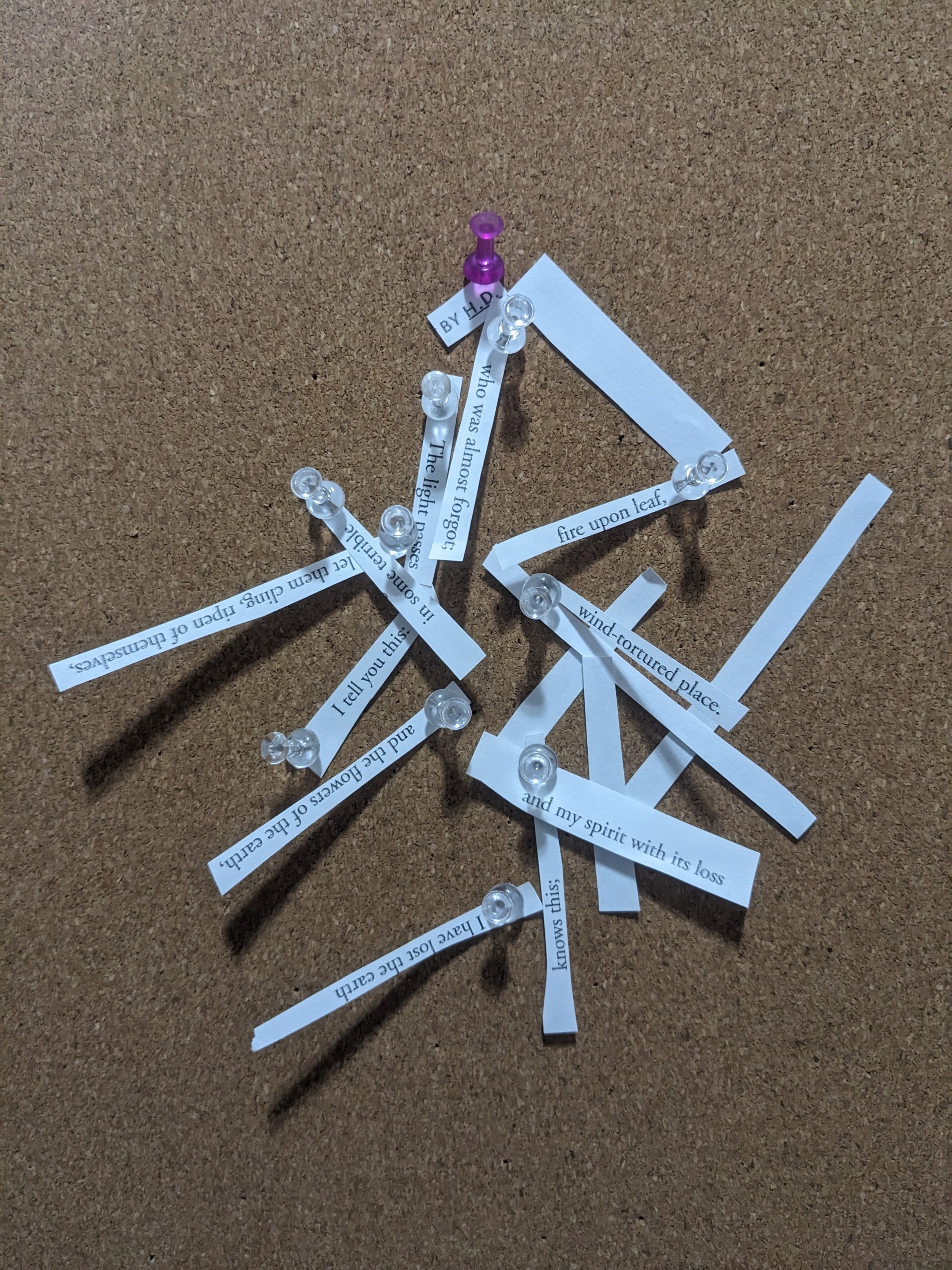
Above is "H.D. and Chance #2" with transcribed poem below
who was almost forgot;
The light passes
fire upon leaf,
let them cling, ripen of themselves,
in some terrible
wind-tortured place.
I tell you this:
and the flowers of the earth,
and my spirit with its loss
knows this;
I have lost the earth.

Above is "H.D. and Chance #3" with trascribed poem below
my hell is no worse than yours
though you pass among the flowers and speak
has caught
wet pebbles
if once I could have breathed into myself
the very golden crocuses
fluted with gold,
fruit on the sand
border-pinks, clove-pinks, wax-lilies,
herbs, sweet-cress.
marked grain,
that hell should be reinhabited
of myself thus
black upon black
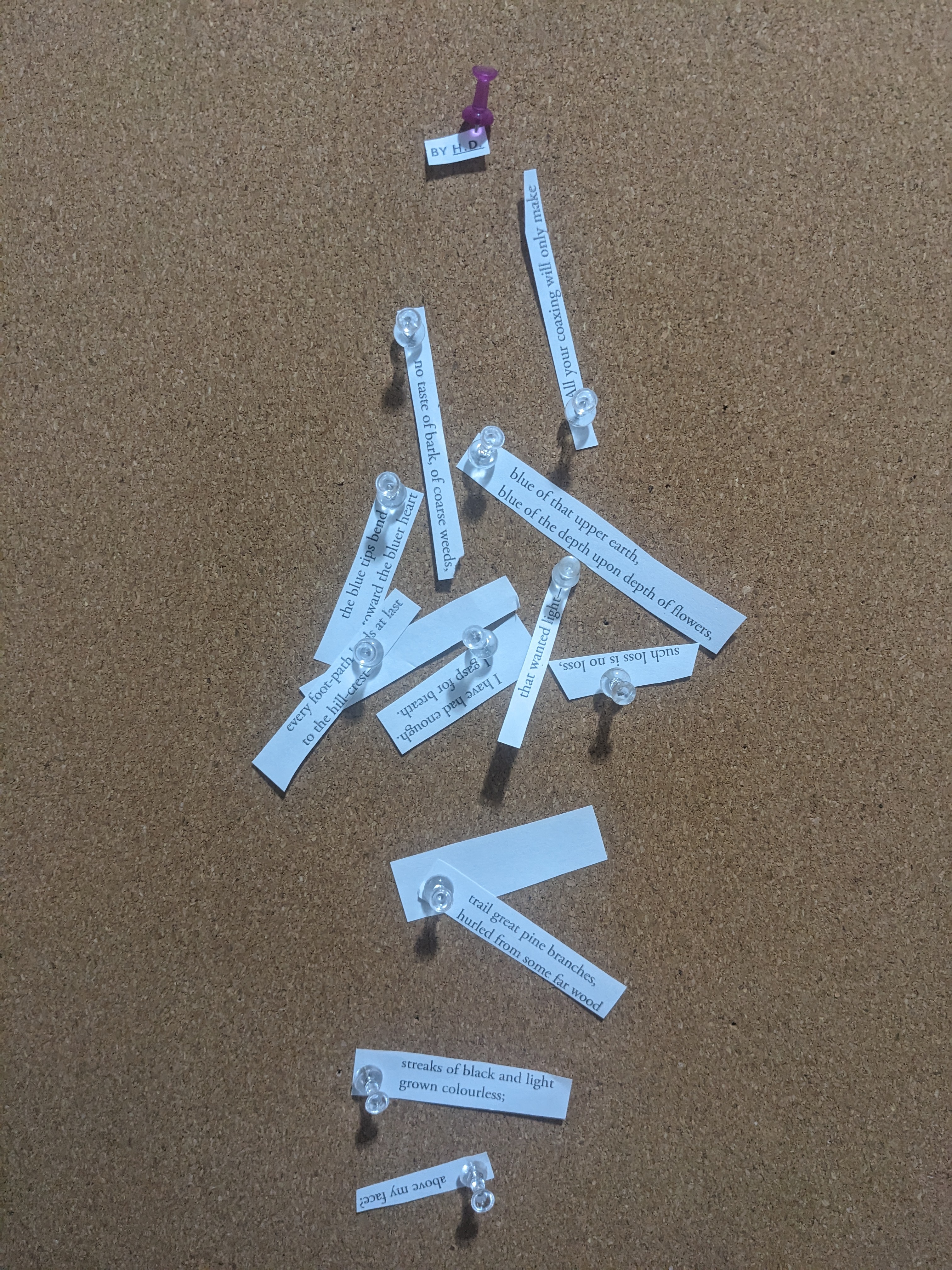
Above is "H.D. and Chance #4" with transcribed poem below
All your coaxing will only make
no taste of bark, of coarse weeds,
blue of that upper earth,
blue of the depth upon depth of flowers,
the blue tips bend
toward the bluer heart
every footpath leads at last
to the hill-crest
I have had enough.
I gasp for breath.
that wanted light —
such loss is no loss,
trail great pine branches,
hurled from some far wood
streaks of black light
grown colourless;
above my face?
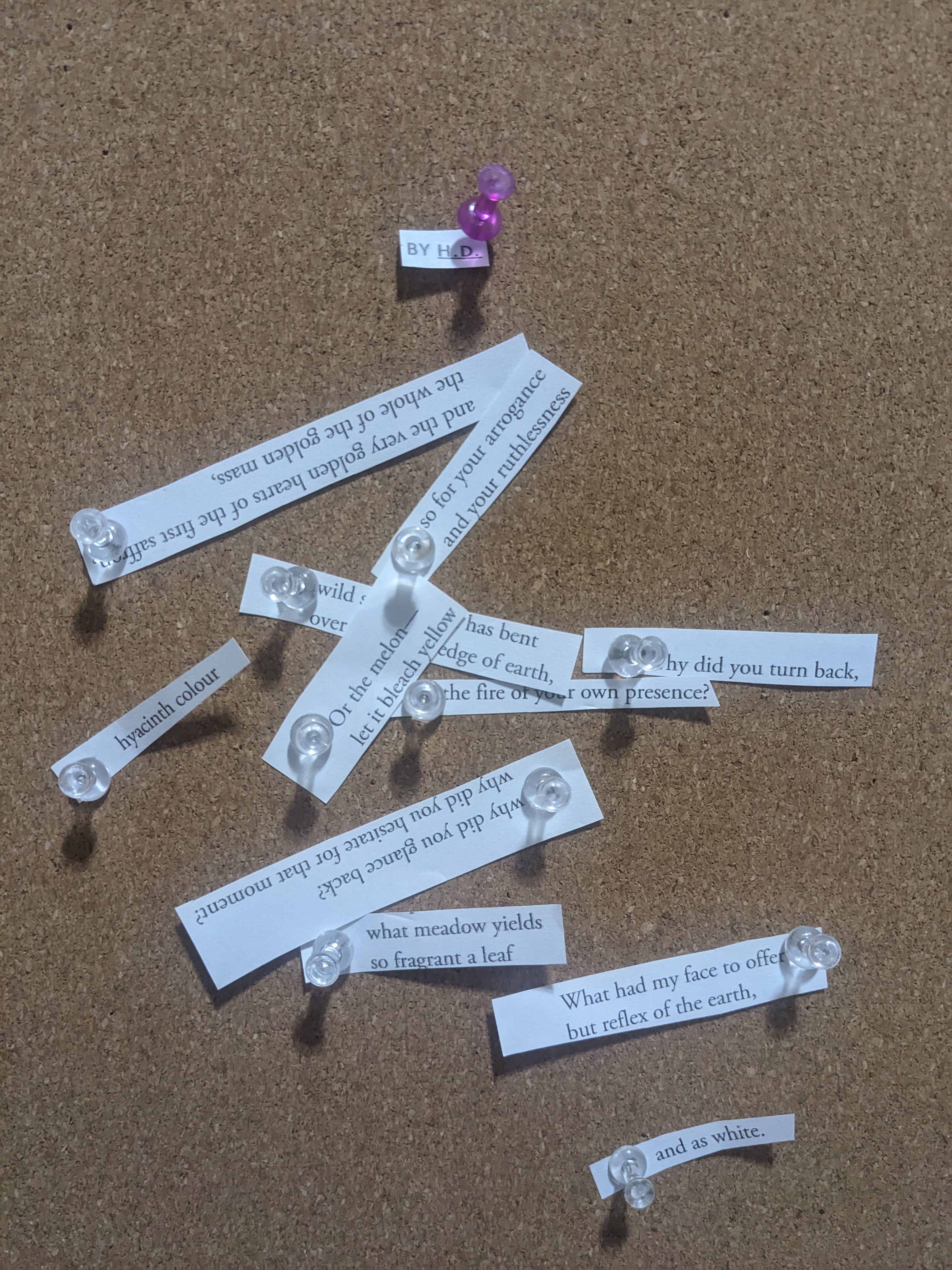
Above is "H.D. and Chance #5" with transcribed poem below
and the very golden hearts of the first saffron,
the whole of the golden mass,
so for your arrogance
and your ruthlessness
wild has bent
over edge of earth,
why did you turn back,
the fire of your own presence?
hyacinth colour
or the melon —
let it bleach yellow
why did you glance back?
why did you hesitate for that moment?
what meadow yields
so fragrant a leaf?
what had my face to offer
but reflex of the earth,
and as white.